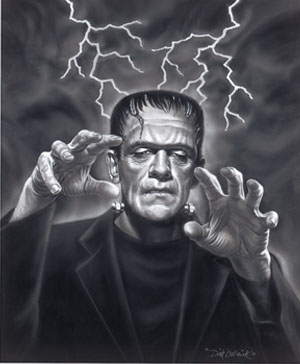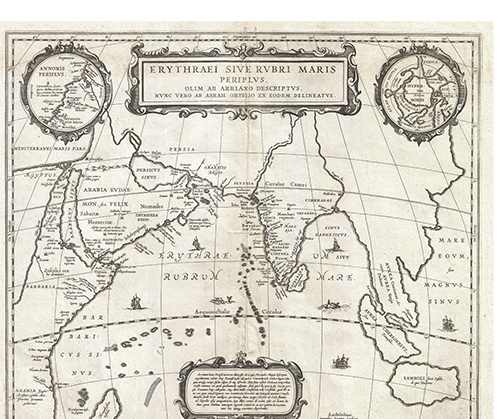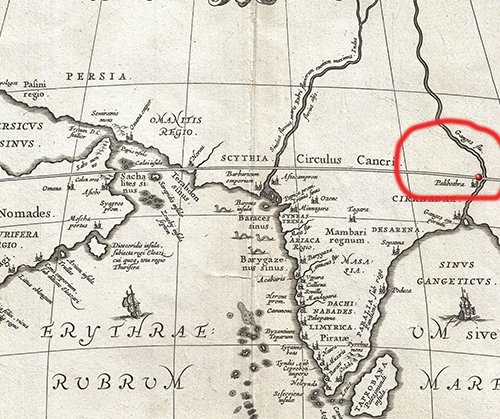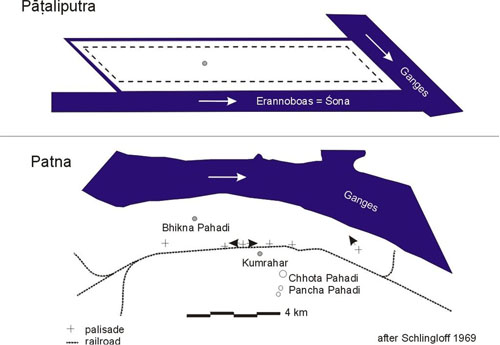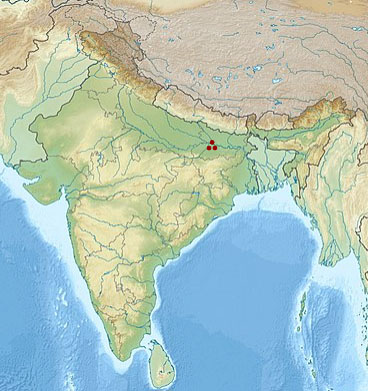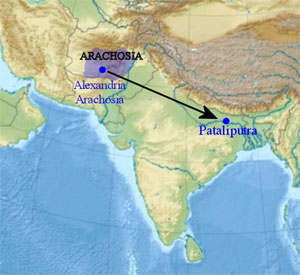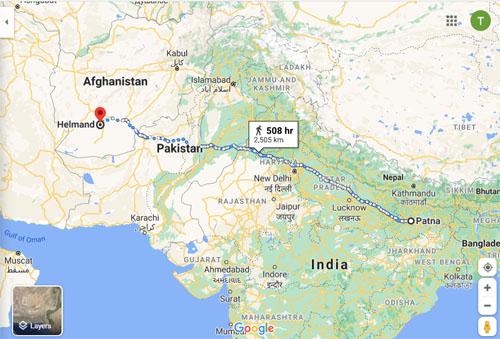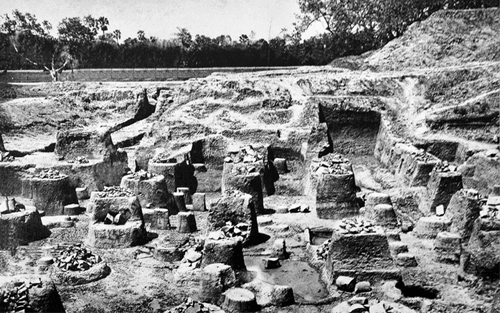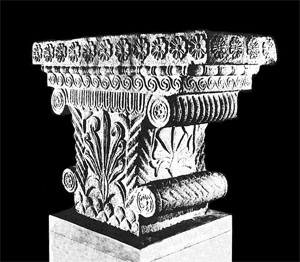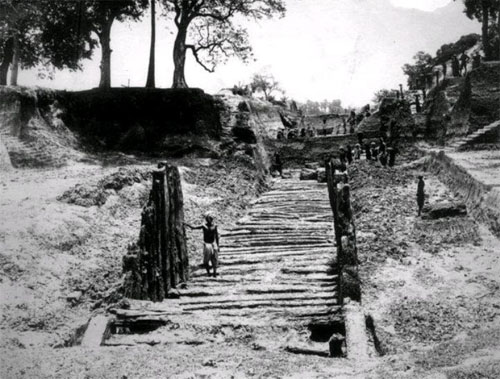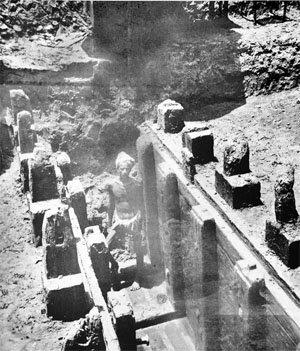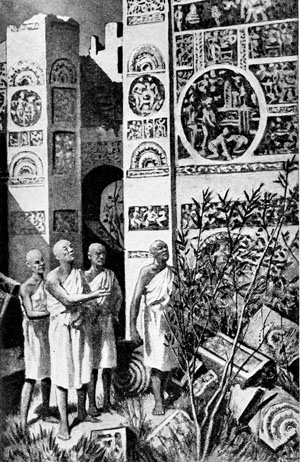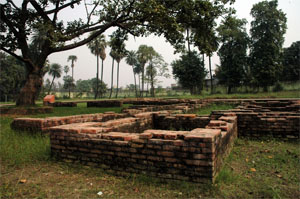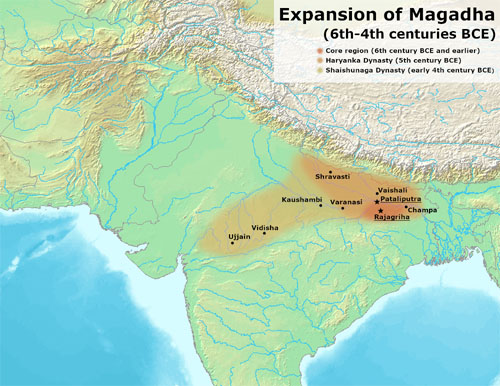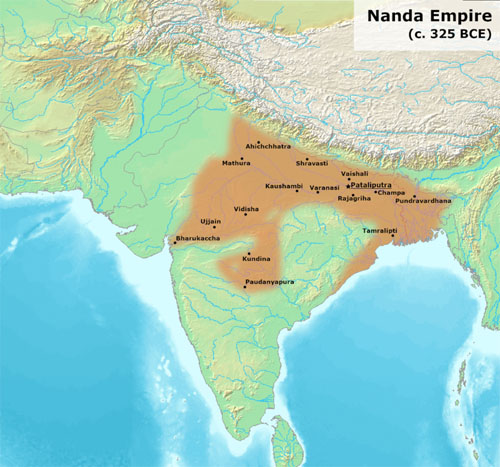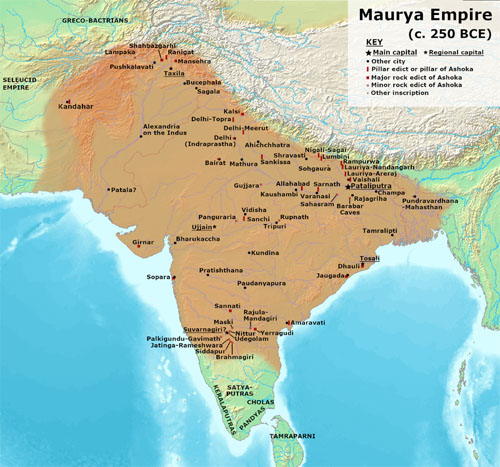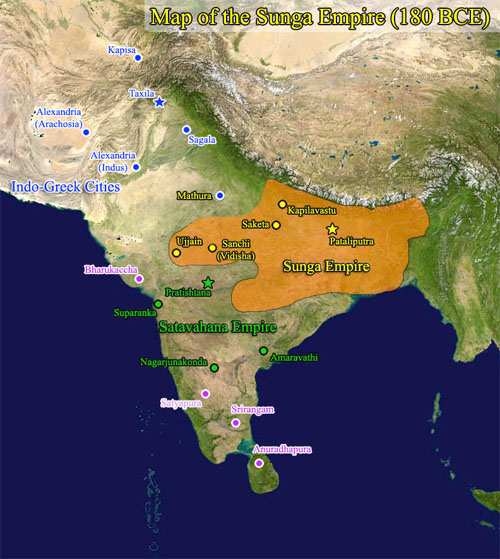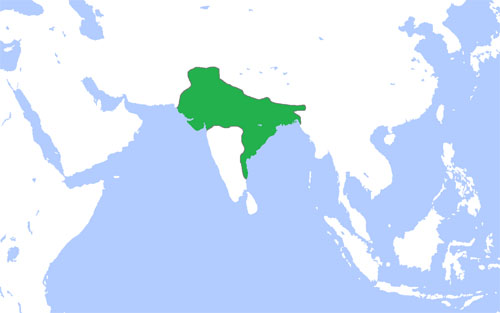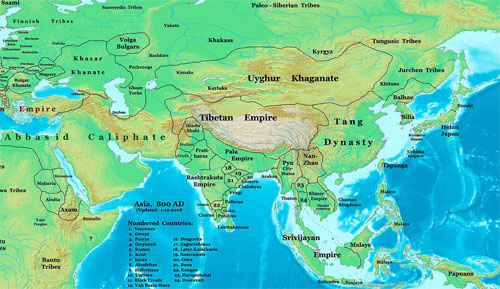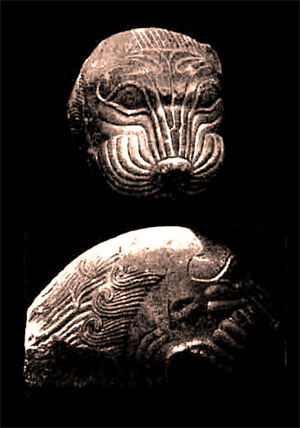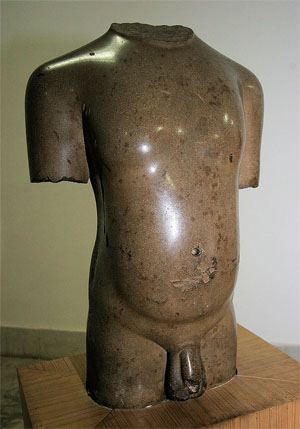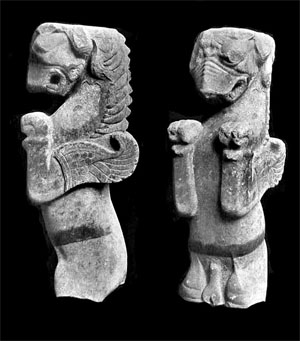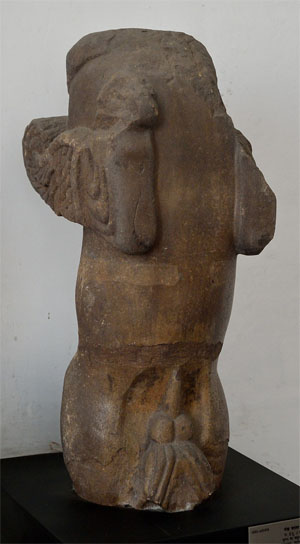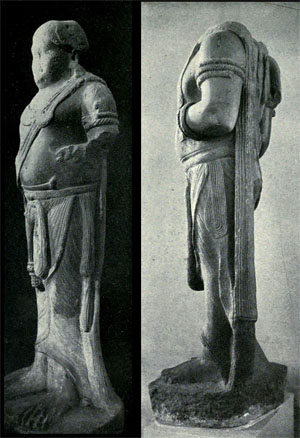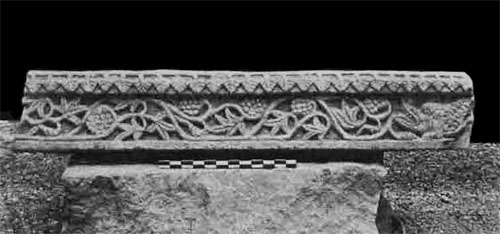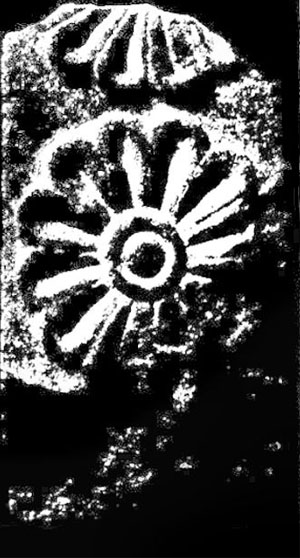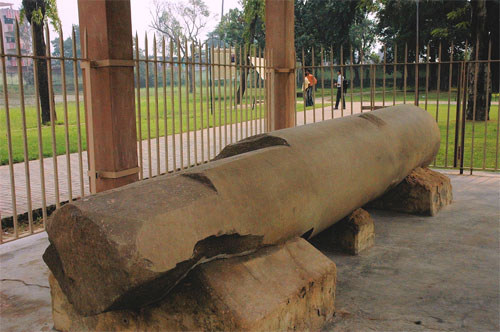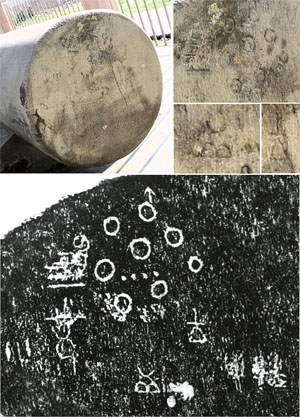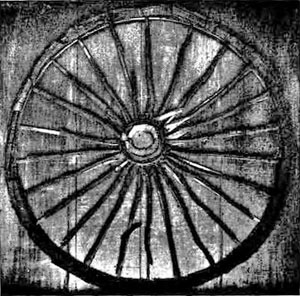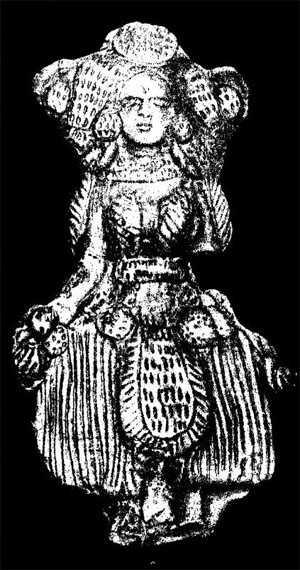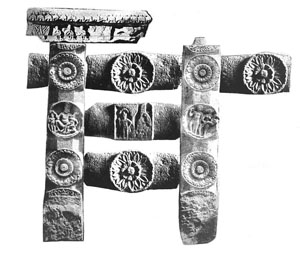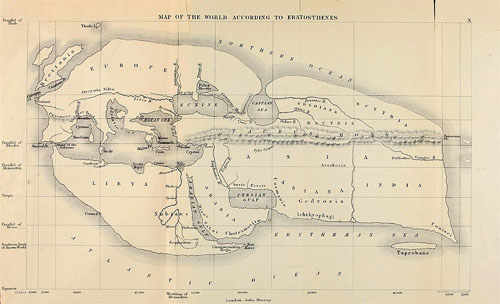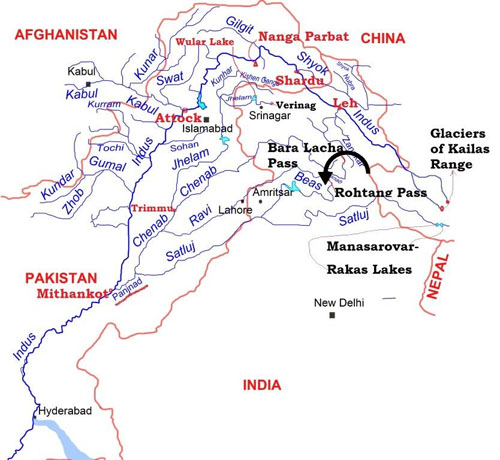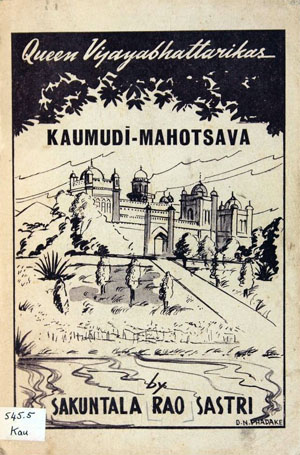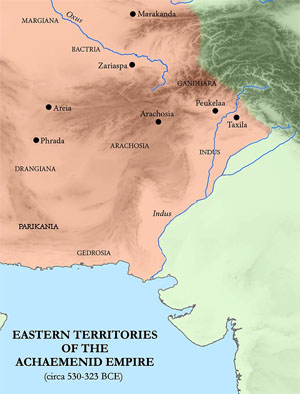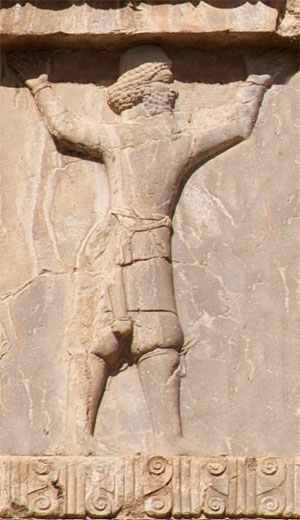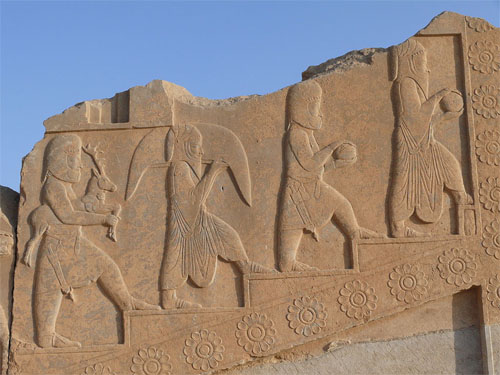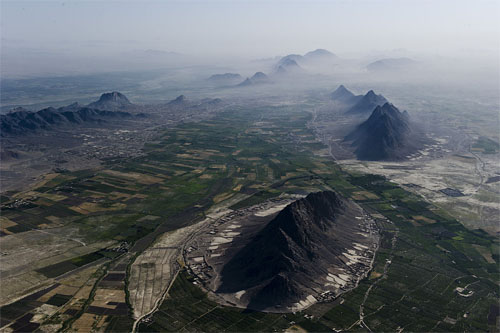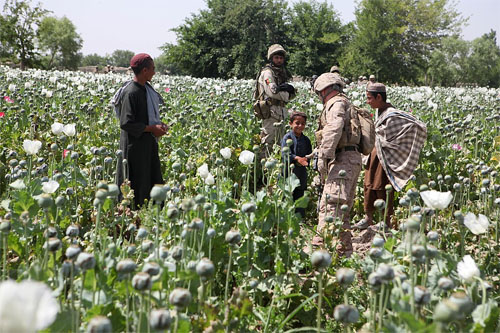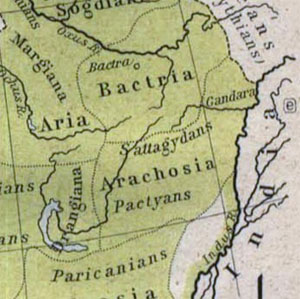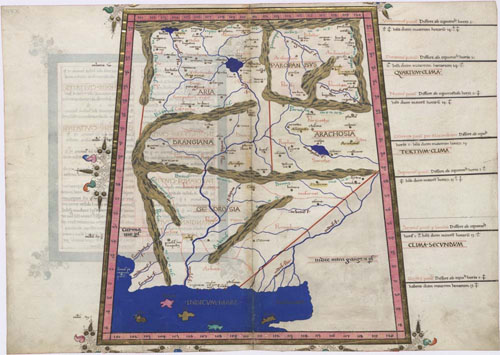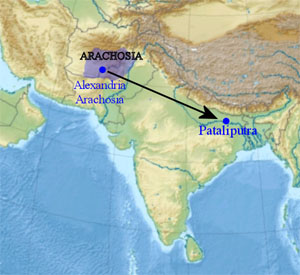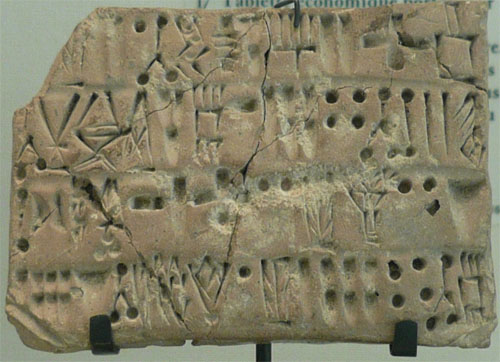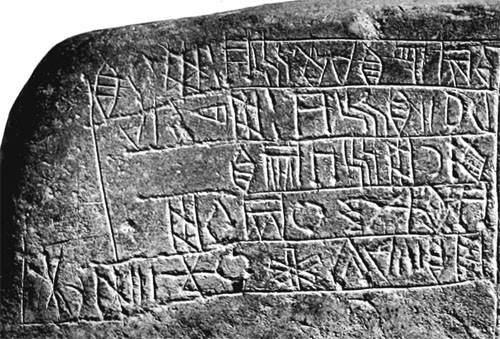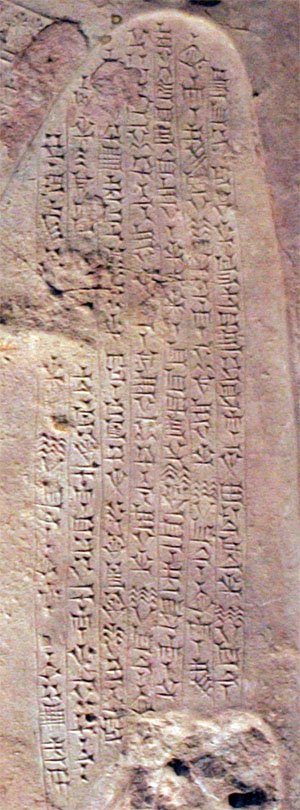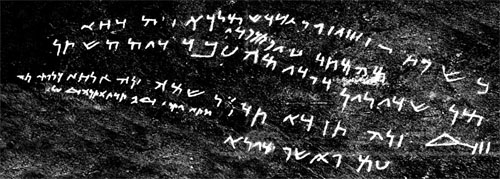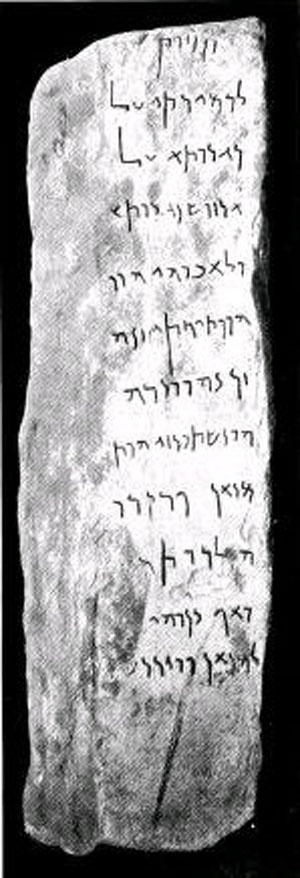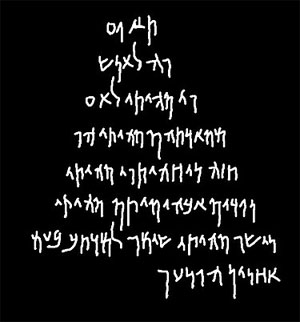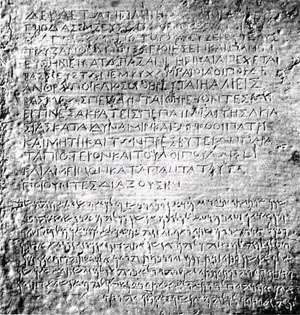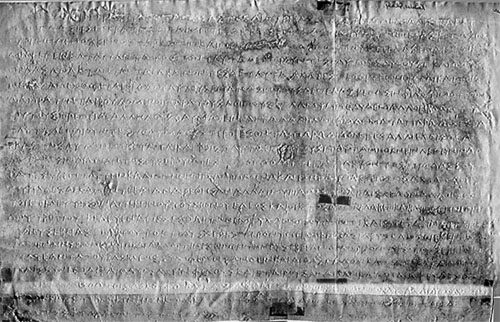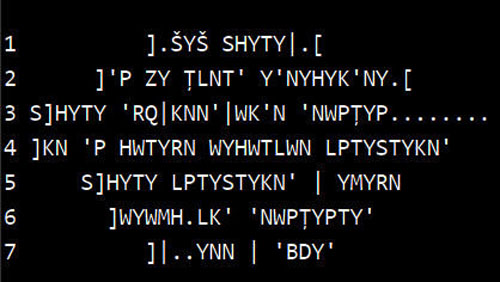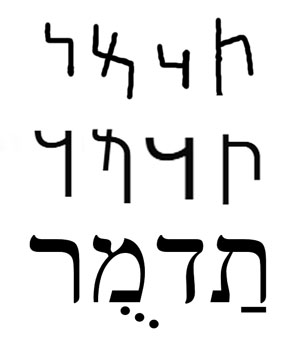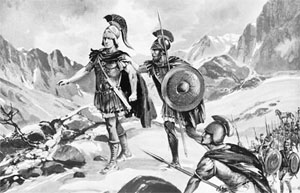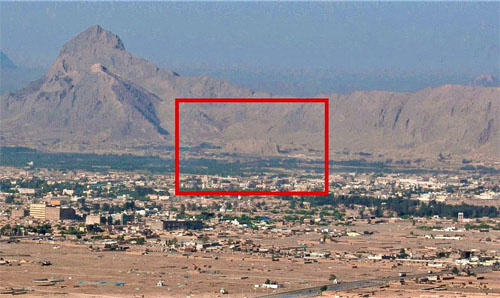by T.S. Kuppanna Sastry (Former Hony. Professor, Sanskrit College, Madras)
1989
NOTICE: THIS WORK MAY BE PROTECTED BY COPYRIGHT
YOU ARE REQUIRED TO READ THE COPYRIGHT NOTICE AT THIS LINK BEFORE YOU READ THE FOLLOWING WORK, THAT IS AVAILABLE SOLELY FOR PRIVATE STUDY, SCHOLARSHIP OR RESEARCH PURSUANT TO 17 U.S.C. SECTION 107 AND 108. IN THE EVENT THAT THE LIBRARY DETERMINES THAT UNLAWFUL COPYING OF THIS WORK HAS OCCURRED, THE LIBRARY HAS THE RIGHT TO BLOCK THE I.P. ADDRESS AT WHICH THE UNLAWFUL COPYING APPEARED TO HAVE OCCURRED. THANK YOU FOR RESPECTING THE RIGHTS OF COPYRIGHT OWNERS.
THE UNTENABILITY OF THE POSTULATED SAKA OF 550 B.C. [Rep. from JIH (Trivandrum), 37 (1959) 201-24.]
I. Introduction
It has been shown in the preceding study that the Saka Era used or alluded to by astronomers like Varahamihira (VM), Brahmagupta, Bhattotpala, Sripati, Bhaskaras I and II, etc. is the era starting from 78 A.D., later known as the Salivahana Saka, and not the era of 550 B.C. postulated by the late T. S. Narayana Sastri (TSN) or V. Thiruvenkatacharya (VT) and called by them the Cyrus Era or the Andhra Era, respectively. Incidentally we have shown to be untenable their statements that Aryabhata belonged near to 2742 B.C., VM to 123 B.C., Brahmagupta to 36 A.D., Bhattotpala to 339 A.D. and Bhaskara II to 522 A.D., and thereby we have proved that VM belongs to 505 A.D. and Bhattotpala to 966 A.D. and indicated that the real date of Arayabhata is 499 A.D. and of Brahmagupta 654 A.D.1 [In the same way we can easily see that the date of Bhaskara II's work, the Siddhanta Siromani, is 1150 A.D., from his statement: rasa-gupa-purya-mahi (1036) sama S'aka-nrpa-samaye ’bhavan mamotpattih / ; rasa-guna (36) varsena maya Siddhanta Siromani racitah //]
In the same way it can be shown that wherever other astronomers or writers like Kalhana and Albiruni mention a Saka Era, it is this Saka of 78 A.D. they mean. The tradition of almanac-makers also supports this, for they all give in their almanacs only this Saka Era and not the alleged other one. In inscriptions and documents also, in short, in every case where a date in Saka Era is given, it is this Saka alone, though this is disputed by TSN and (till recently) by Sri Kota Venkatachelam (KV) in the case of the Aihole Inscription (to which we shall revert later).
II. VM’s Brhat-Samhita XIII. 3 considered
We shall now take up for discussion Brhat-Samhita of VM (Br. Sam.) XIII. 3 referred to by us in the previous paper, which TSN and others consider as their stronghold, and which we left over for detailed consideration later:
asan maghasu munayah sasati prthvim yudhisthire nrpatau /
sad-dvika-panca-dvi-yutah Sakakalas tasya rajnas ca //
This stanza occurs in the context of the Saptarsi-cara or the alleged ‘Motion of the Seven Sages’, (i.e., the group of stars Ursa Major or the Great Bear), among the twenty- seven asterisms, given for use in astrological prediction. To find the position of the group at any time, three things are necessary: (i) its position at a given time; (ii) the time elapsed from the given time to the time for which the position is required, and (iii) its rate of motion. The above stanza gives (i) and (ii), viz., that at the time of Yudhisthira’s rule the Sages were at the asterismal segment Magha, and the time elapsed from this time to any year in the Saka Era is the number of the year in the Saka Era plus 2526. (Requirement iii is given in the next stanza, XIII. 4, as one asterismal segment for 100 years).
Now TSN and KV argue thus: (a) This stanza is a quotation from Vrddha Garga (VG), and so VG knows a Saka Era which he mentions here. It is accepted by all that VG lived long prior to 78 A.D., the starting point of the Salivahana Saka. So this Saka must be an earlier Saka, viz., that of 550 B.C. postulated by them, (b) The first half of this stanza says the Sages were in Magha during Yudhisthira’s time. The Puranas and VG etc. say that at the junction of Dvapara and Kali yugas, the Sages were at Magha and Yudhisthira was ruling. 25 years after the advent of Kali, the Sages moved to the next asterism from Magha and in that year Yudhisthira left this world for heaven. The second half of the stanza states that the Sakakala mentioned therein started 2526 years after Yudhisthirakala. If we take Yudhisthirakala to have started from the time he went to heaven, i.e. after 25 Kali equivalent to 3076 B.C., this Saka must have started 2526 years after this, i.e. from 550 B.C., and is evidently quite different from the Saka starting from 78 A.D.
It is in the light of this conclusion, and in support of it, that TSN etc. say (as we have discussed already in the previous paper), that the Sakakala mentioned by VM in other places in his works, and also by other astronomers like Brahmagupta, is this Saka of 550 B.C. But we have proved conclusively in the previous study that in those places it is the Saka of 78 A.D. that is referred to.2 [There is one other place were VM mentions the Sakakala viz. dvyunam S'akendrakalam etc. (Pancasiddhantika, XII. 1), which we have not taken for discussion. This mention is in connection with the rough Paitamaha Siddhanta, and as no useful purpose will be served by discussing it, and as it is not taken into consideration by TSN etc. also, we have left it out.] Therefore the conclusion here arrived at by TSN etc. must stand on its own legs. We shall proceed to examine this now. Even at the outset we can say that it is extremely unlikely that VM means here alone a Saka different from what he means by the same word elsewhere in his works; and therefore he must mean the Saka of 78 A.D. here also. All the same we shall examine their arguments.
(a) The alleged quotation of Vrddha Garga
The reasoning (a) is based on the assumption that the stanza is a quotation from VG, which it is not. The actual words of VG are quoted by the commentator Bhattotpala in his commentary on this stanza: cf. tatha ca Vrddha-Gargah: “Kali-Dvaparayoh sandhau sthitas te pitrdaivatam” (At the junction of Kali and Dvapara, they—the sages—were at Magha). It is to be noted that this would be redundant if the staza in question also were VG’s, both giving the same idea, viz. the situation of the Sages. It may also be noted that this is in a different metre. What VM means by his statement in the introductory stanza, kathayisye Vrddha-Garga- matat (Br. Sam. XIII. 2) is only that he is giving the astrological predictions due to the motion of the Sages as based on the work of VG, as indicated by the word matat (‘opinion’) used here. Also in all the other caras given in the other chapters of Br. Sam, like Adityacara, Candracara, Rahucara etc., what VM means by cara is the prediction based upon the motion and not the actual motion, and so must it be here also, (the actual motions being given in a ganita work like the Pancasiddhantika). If in the case of the Sages the motion also is given, it is because it is simple, has not been given elsewhere, and is necessary for the main purpose, viz., the prediction according to the motion. Thus it is the prediction that VM says he gives according to VG. So this stanza which serves to find the position of the Sages need not necessarily be, and as we have shown, is not, VG’s.3 [This is the reason why this stanza has not been taken as VG’s by other scholars also. For e.g. Colebrooke writes: “The commentator, Bhattotpala, supports the text of his author (viz. VM) by quotations from VG and Kasyapa: ‘At the junction of the Kali and Dvapara ages’, says Garga, ‘the virtuous Sages ... stood...’ at Magha” (Miscellaneous Essays, London, 1873, vol. III, p. 313). Cunningham writes: “His (VM’s) words are, “The Seven Seers etc.,’ But unluckily for VM, his commentator Bhatta Utpala has given us the very words of Garga, who simply says, ‘At the junction of the Kali and Dvapara ages the virtuous Sages .... stood at the asterism over which the Pitrs preside, that is Magha'. On comparing this quotation with Varaha’s statement (in the stanza in question) we see at once that he (VM) has suppressed Garga’s mention of the Kaliyuga....” (Book of Indian Eras Culcutta, 1883, pp. 9-10). This shows, that Cunningham considers that VM is not quoting the stanza, but that it is VM’s own. P. V. Kane says: ‘In the preceding verse VM says that he will declare the motion of the seven sages by deriving it from the doctrine of VG. The first mistake of the writer (It is KV that he refers to here) is to hold that verse XIII.3 came originally from Garga Samhita. Really it is VM’s own verse. Utpala quotes the verse of VG, on this point, which is in a different metre, though the meaning is the same as the first half of XIII.3" (JAHRS XXI (1950-52) 41).] This being the case, it cannot be argued that Garga who came long prior to 78 A.D. knows a Sakakala and therefore this Sakakala must be the earlier postulated one of 550 B.C.
(b) The Time of Yudhisthira
We now pass on to consider (b), the second and more important reasoning of TSN etc., viz., that VM in this verse refers to Yudhisthira who lived at the beginning of of Kali and rose to heaven 25 years after Kali set in (i.e. in 3076 B.C.) and so the Saka Era beginning 2526 years after that must be the postulated Saka of 550 B.C. But we answer, there is nothing in this verse to show that in VM’s opinion Yudhisthira lived at the beginning of Kali. On the other hand, it can be shown that VM might have meant a time about 650 years after Kali, or even that he did mean this later period for the time of Yudhisthira, and therefore the Saka Era following 2526 years after, cannot be the postulated saka of 550 B.C., but can only be the well-known Saka of 78 A.D. It is a fact well known to scholars (inclusive of TSN etc.) that the junction of Dvapara and Kali (3102 B.C.) is not the only period with which Yudhisthira is associated. This is according to one school; but there is at least one other school ( e.g. that of the Jain and Buddhist writers) who take it that Yudhisthira lived about 500 years later. They use a Yudhisthira Era which began in 468 Kali (corresponding to 2634 B.C.).4 [Vide: i, Jinavijaya “rsir varas tatha purnam martyaksau (2077) vamamelanat” "nandah purnam bhusca netre maujanam (2109) ca vamatah” quoted by TSN in his Age of Sankara, (Madras, 1916 ff.), Pt. I. ch. iii, pp. 139 and 141, and also his adding 468 to get the year in the Kali Era. It has be added that TSN’s alleged quotations from this work are his concoctions. We have shown this in the ‘Date of Sankara” (see supra), ii Kota Bhaviah Chowdary’s statement: ‘According to Jain authorities Yudhisthira was crowned in 2634 B.C. only... From Puranic Kaliyuga (of 3102 B.C.).... 468 years passed up to Yudhisthira”. (JAHRS XXII (1952-54) 53 Cf. also Cunningham, Book of Indian Eras, p, 7, where he speaks of Abul Fazal giving in his Ain-i-Akbari three views on the subject, of which one is the regin of Kamsa, (uncle of Krsna and so contemporary of Yudhisthira) “above 4000 years before the fortieth of Akbar”, (i.e., 1595 A.D.), that is between 2400 and 2500 B.C.’ This would give Yudhisthira a date about 2407 B.C. or the 7th cent, in Kali.] Even of the first school mentioned, not all associate the same event of Yudhisthira’s life with the beginning of Kali, 3102 B.C. There are four sub-schools here (Fleet says three, but mentions all four, JRAS (1911) 676-78, ‘The Kaliyuga Era of B.C. 3102’). One sub-school believes that the first coronation of Yudhisthira at Indraprastha was the beginning of Kali and the commencement of the Yudhisthira Era.5 [The inscription in the temple of Hanuman at Jasalmer, Rajaputana, gives a date in this era. The speech of Hanuman in the Mahabharata, Vanaparva, ch. 151, verse 39 (Kumbakonam edn.) containing the words etat kaliyugam nama acirad yat pravartate, and Krsna’s excuse for the unfair fight with the words praptam Kaliy ugam viddhi (ib . S’alyparvan, ch. 61, verse 27) support this. Abdul Fazl expresses another view that the Mahabharata War was fought 4801 years before the 40th year of Akbar’s rule and 105 years before the end of the Dvapara age, (see ib).] Another makes the Bharata war and the beginning of Kali synchronous.6 [Eg. the Aihole Inscription. See discussion infra for details. This view is mentioned also by Abul Fazl, which is 4696 year before the 40th year of Akbar’s rule, (see ib).] A third says that Kali began at the death of Krspa and his ascent to heaven.7 [The Puranas express this view. Cf: yasmin Krsno divam yatah tasmin eva tadahani / ; pratipannah Kaliyugah tasya sahkhyam nibodhata //; Brahmanda Purana, ch. 74, verse 241 (Venk. Press edn.). Vayu has the same reading. Visnu, Matsya and the Bhagavata have almost the same reading.] The fourth sub-school says that Yudhisthira’s abdication and starting on the Mahaprasthana was at the beginning of Kali.8 [The words in the Aryabhatiya, Gurudivasac ca bharatat purvam, (Gitika, 5), which is explained by Paramesvara as ‘the day of the Mahaprasthana’, support this.] The reason why there are so many views must be explained by the fact that the traditional idea of the ages like Krta, Treta, Dvapara and Kali with their specific characteristics, was earlier than the integration of the beginning of the traditional Kali with that of the astronomical Kali answering to 3102 B.C., which was computed later by astronomers like Aryabhata so as to form a convenient point of reference for the Mean Planets. Thus the Kali Era, said to begin with 3102 B.C., is an extrapolated era, and in examining any date mentioned in this Kali Era, this fact should be borne in mind.
Now, in this multiplicity of schools on this point, which is a fact accepted by all, resulting from the integration of the traditional Kali with the astronomical Kali, there is the possibility of VM’s statement representing one other school or at least a variant of the Jain school, differing as it does, from it only by about two centuries. Kalhana, the Kashmirian chronicler of the 12th cent. A.D., is one of those that subscribe to this school; for not only does he quote in his Rajatarangini this verse of VM. but also expresses his own concurrence with it in so many words:
Bharatam Dvaparante ’bhud vartayeti vimohitah /
kecid evam mrsa tesam kalasankhyam pracakrire //
I.49//
***
satesu satsu sardhesu tryadhikesu ca bhutale /
Kaler gatesu varsanam abhuvan Kuru-Pandavah //
I.51 //
***
sat-dvika-panca-dvi-yutah Sakakalas tasy rajnas ca /
I.56b I//
“Some people have been misled by the statement that the Bharata (War) was at the end of Dvapara, and have given a wrong chronology to the kings (the Pandavas, Gonanda etc.) ... The Kurus and the Pandavas came when 653 years had passed in Kali... The time in the Saka Era plus 2526 is the time of his rule, i.e. the time in the epoch beginning from his (Yudhisthira’s) rule.”
It may noted that 653 plus 2526 (the numbers here given) equal 3179, the well-known converter of Saka into Kali and vice versa. Not only is Kalhana a believer in this school, but he is also certain that VM belongs to this school, as seen by his statement ‘Samhitakaraih' (Rajatarangini, I. 55) and his quotation of VM following immediately (I. 56). Cunningham also thinks the same as seen from his statement, “As VM places the Great War 653 years after the beginning of the Kali Age....” (op. cit. p. 11). Again, Prof. P. C. Sengupta, who in his Ancient Indian Chronology (Univ. of Calcutta, 1947) in seeking to determine the date of the Bharata War astronomically (see chs. I-IIl) favours this school, and comes to the conclusion that: ‘‘The date of the Bharata Battle is thus astronomically established as the year 2449 B.C. (Kali 653), which is supported by the Vriddha Garga tradition recorded by Varaha Mihira.,’ (see p. 19). Now it must be noted that the mere possibility of following this school is sufficient for our purpose, as we have stated above.
Nor, can the objection be raised that VG and the Puranas associate the Sages with Magha at the beginning of Kali, and that in this verse too, as the Sages are declared to be at Magha in Yudhisthira’s reign, the time here should be taken as the beginning of Kali, and so the time given for Yudhisthira’s rule must be the beginning of Kali, and not 653 Kali. For, the beginning of Kali is not associated with Magha alone. The Matsya Purana says (ch. 271, st. 41) that according to the Srutarsis the Sages were at Krittika at at the beginning of Kali, and TSN and KV are aware of it (TSN quotes it and explains it, see The Age of Sankara, Madras, 1916 ff., App., pp. 166-67; so also KV, Plot in Indian Chronology, 34-36). They themselves say that in VM’s opinion also the sages were at Krittika at the beginning of Kali (TSN. ib., p. 171; KV, ib. p. 36, and ‘Indian Eras’, JAHRS XX. 77).9 [In fact, nowhere does VM say that the sages were at Krttika at the beginning of Kali. This must be an inference of Cunningham when he gives (cf. Table on p. 17 of his Book of Indian Eras ) 3177 B.C. for the beginning of Krttika according to VM, inference from the fact that according to him the Sages passed to Magha in the 7th cent, after Kali (cf. same Table). TSN and KV seem to have simply taken Cunningham’s statement as true without question. They only object to Cunningham’s treating the motion as direct, while according to them it is retrograde. But they fail to see that if the motion is retrograde, the Sages should be at Anuradha (and not at Krttika) at the beginning of Kali, if they are to come to Magha seven centuries later. The Cunningham’s inference would be wrong and their acceptance of it would also be wrong.] According to Aryabhata II and Parasara too (for details see below), the Sages were at Krttika at the beginning of Kali. They were at Sravana according to Sakalya and Munisvara, and at Rohini according to Lalla (for details, see below). So the objection raised above does not stand. Now, according to Aryabhata II and Parasara, who give Krttika, it is easily seen that the Sages will be in Magha in the 7th cent. Kali, for Magha is the seventh asterism from Krttika and the motion is about one century per asterism. Thus, there can be no objection to the Sages being in Magha in the 7th cent. Kali. It is only if the motion of the Sages is taken to be retrograde (as TSN and certain others think) according to Aryabhata II, Parasara and VM, that the Sages cannot be in Magha in the 7th cent. Kali, but would be far away from it. But it is not retrograde according to Aryabhata II, Parasara and VM, as also according to other astronomers who give rules for the motion, which we shall show.
III. (a) ‘Motion of the Sages’—Direct, not Retrograde
This requires a knowledge of the motion of the Seven Sages10 [The following are the names of the Sages, with their Right Ascension and Declination for c. 1900 A.D.: (i) Kratu (Alpha Ursa Major) 10h 58m, +62° 17'; (ii) Putaha (Beta Ursa Major) 10h 56m, +54° 55'; (iii) Pulastya (Gamma Uras Major) 11h 49m, +54° 15'; (iv) Atri (Delta Ursa Major) 12h 10m , +57°; (v) Angiras (Epsilon Ursa Major) 12h 50m, + 56° 30'; (vi) Vasistha (Zeta Ursa Major) 12h 50m, +56°; (vii) Marici (Eta Ursa Major) 13h 44m, + 49° 49'. For comparison we shall give the asterisms belonging to the corresponding ecliptic segment: Magha (Alpha Lenois) 10h 3m , +12° 27'; Pur. Phal. (Delta Lenoise) 11h 9m , +21° 4', Ut. Phal. ( Beta Lenois) 11h 4m, +15° 8'; Hasta (Beta Corvi) 12h 29m, —25° 5'; Citra (Alpha Virgo) 13h 20m , —10° 38', Svati (Alpha Bootes) 14h 11m, +19° 42'.] which we shall give in some detail because there is a lot of misconception among scholars (including TSN, KV and VT) about this, which in turn vitiates the results of their researches. It was believed by the authors of the ancient Jyotisa Samhita, like VG, that the Sages had a motion of their own among the other stars, just like the planets, the rate of motion being given as 100, or nearly 100, years per asterism (13° 20'). It may be said, even at the outset, that there is no such motion as claimed to exist by the authors of these Samhitas and followed up the Puranas and some of the later astronomers; that the Sages are always to be associated only with the Phalgunis, Hasta and Citra asterisms (see fn. 10); and that the theory of their motion is wrong, howsoever it might have originated.11 [(i) A number of explanations can be given as to how this wrong theory of motion could have originated, but as this is beside the point, we stop with saying this much. Some people believe in the reality of this motion and try to explain it accordingly, using the theory of the Precession of the Equinoxes. For e.g. (i) VT says that because the celestial Pole moves in a small circle once round the Pole of the Ecliptic in about 27,000 years, the point of inter-section of the Ecliptic with the line joining it and the mid-point of the first two stars constituting the Sages also moves. As the Sages are said to be at this point of intersection, they are also considered to move (see his Popular Astronomy, Madras, 1958, pp. 138-40). But this simulated motion can be only a small fraction of of the value of the motion according to the Samhitas which is as great as 13° 20' per century. Also, while the Samhitas say that the motion is uniform and traverses the ecliptic completely, this simulated motion will not be uniform, and will be oscillatory and restricted to a small segment of the ecliptic. Thus it will be forward and backward, the former during the past 7,000 years and more, against the opinion of VT ( cf . ib., p. 139) who says that the motion is retrograde like that of the First point of Aries. (ii) Prof. R. Krishnamurti (according to VT, ib. 139-40) holds the view that the extent of the Sages in longitude is about a tenth of the ecliptic. This extent is divided into 27 equal parts, each part ‘symbolically’ forming a Naksatra. The traversing of these 27 symbolic Naksatras will take 2700 years. If it is taken that the other 9 segments also are so divided, it will take 10x2700=27,000 years for traversing the whole ecliptic. According to him, the authority for this symbolic division is the following in the Rgveda: satm te rajan bhisajas sahasram urvi gabhira sumatis te astu / ; badhasava dure nirrtim paracaih krtam cidenah pramumugdhyasmat // ; ami yo rksa nihitasa ucca naktam dadrse kuhacid diveyuh / adabdhani varunasya vratani vicakasaccandrama naktam eti // Rgveda 1.24.9-10. But what have these rks in prayer of Varuna to do with the alleged symbolic division? What flight of imagination can create the idea of the symbolic division of the ecliptic from the two words satam and sahasram in one sentence, and the word rksa i n quite a different sentence? And then Prof. Krishnamurti seems to suggest that the motion of the Sages is only another name for the phenomenon of Precession, artificialised for the purpose of chronology. (iii) Dr. D. S. Triveda (JIH XIX (1940) 9-12) confuses the motion of the Sages with Precession itself and says that the ancient rsis, far older than Samhitakaras, had discovered a cycle of 27,000 years for the motion (the same as for Precession), but by the time of the Samhitakaras one cypher was lost, and the period was mistaken as 2700 years! He does not mention how Precession simulates the motion of the Sages.] That is why many standard astronomers and astronomical works like Aryabhata I, Brahmagupta, Sripati, Bhaskaras I and II, the Suryasiddhanta, etc., do not deal with the subject at all as being outside the pale of real astronomy. That is also why Kamalakara is constrained to say in his Siddhanta Tattvaviveka (Banaras, 1880-85), Bhagrahayutyadhikara:
Sakalyasamjna-munina kathitas sabanah
saptarsitarakabhava dhruvakas calais ca / 25a /
***
yair golatattvam vivrtam hi tais ca
suryadibhir naiva visesa esah /
proktas svasastre 'sti gatir muninam
ato na yukta divi golaritya // 30 //
* * *
adyapi kair api narair gatir aryavaryaih
dysta na yatra kathita kila Samhitasu / 32a /
* * *
prayo ’tha te ca munayah kila devatamsa
drggocara nahi nrnam iha satphalaptyai /36 /
“Sage Sakalya has given the motion of the Sages with their positions in his time...Surya and others who explain the nature of the celestial sphere in their works do not give it and therefore the theory cannot be sustained astronomically...Even today this motion mentioned in the Samhitas is not observed by knowing astronomers... Therefore the seven real Sages who are (only) the presiding deities (of these stars) are to be considered to be moving, unobserved by men, for the prediction of the fruits thereof.”
But the motion has been accepted as a fact by the common people and the authors of the Puranas, and an era called Laukika Era (by the people belonging to the Kashmir region) and the Saptarsi Era (by the Puranas), has been founded upon this theory.12 [We do not know when these eras were founded. The Puranas say that 25 years after Kali set in, the Sages who had been at Magha for 100 years left it for the next asterism. The dates of the dynasties of kings are given in terms of the situation of the Sages in the different asterisms. The Laukika Era is the same as the Saptarsi Era with the number of the year in each century being generally used and the centuries or the reference to the asterisms omitted. This is used in the Rajatarangipi to give the dates of dynasties and kings, as also the date of the work.] As already mentioned, there are also astronomers like VM, Aryabhata II (cf. his Aryasiddhanta or Mahdsiddhanta, Madhyamadhyaya, 11), Parasara (cf. Aryasiddhanta, Parasaramatadhyaya, 9), Lalla (quoted by Munisvara in his commentary on the Siddhanta Siromani), Sakalya (quoted by Munisvara, ib., and by Kamalakara in his Siddhanta Tattvaviveka, Bhagrahayutyadhikara 25 and under), Vatesvara, and Munisvara (see his Siddhanta Sarvabhauma), who have accepted the motion as real on the authority of the ancients and given rules for the motion, which necessarily must agree with their own observation, or else they would be meaningless even for them.13 [vide Colebrooke, ib., p. 316-17: ‘‘...a probable inference may be thence drawn as to the period when these authors lived, provided one position be conceded; namely, that the rules, stated by them, gave a result not grossly wrong at the respective periods when they wrote. Indeed, it can scarcely be supposed that authors, who, like the celebrated astronomers in question, were not mere compilers and transcribers, should have exhibited rules of computation, which did not approach to the truth, at the very period when they were proposed.”] This means that whatever be the rule, if applied to the time of the author, the position of the Sages must be got as between Magha and Svati.14 [Because the Sages are always to be seen within this limit. Though strictly speaking the position of the first two stars are to be taken into consideration, still, in practice, the situation of the whole group must have been vaguely taken as the position. The Sages are said to be at the asterism where the declination circle passing through the mid-point of the two front stars (Pulaha and Kratu) that rise first, cut the ecliptic. This would give a position beyond Magha and near Purva Phalguni, at present. (But in ancient times Magha might well have been the position an account of the Celestial Pole having been a little more to the East of its present position.) But it seems that later on it came to be considered that the asterism against which the Sages are seen generally is the position. Thus we can get Purva Phalguni, Uttara Phalguni, Hasta or Citra. The rule may also be interpreted as the segment which is seen to rise together with the two front stars. If this interpretation is accepted, we can get, on account of cara (oblique ascension), any asterism from Krttika to Magha as the position for observers in North India according to their latitude.] In giving the rules, the authors all consider the motion as direct and never as retrograde as fancied by some scholars like TSN, KV, VT etc, for which fancy there is no support anywhere.15 [The idea of the retrograde motion must have originated very late, the reason being that it can, at that period, serve to reconcile faith in the theory of the motion with observation. (Giving various positions like Magha, Krttika, Rohini, Sravana, to the Sages at the beginning of Kali, giving different rates of motion, and being satisfied with rough positions, are evidently only different means of effecting this reconciliation). The Pandits of Banaras who informed Col. Wilford in c. 1804, believed in the retrograde motion. The Kaliyugarajavrttanta, (Bhaga. Ill, ch. iii), as quoted by TSN, KV and VT, undoubtedly believes that the motion is retrograde, by stating that 25 years after Kali set in, the Sages left Magha for Aslesa (See Age of Sankara, Pt. I, App., 139ff; JAHRS XX. 62ff; JAHRS XXII. 169-70). But as can be seen from the dynasties it deals with, it is a recent work, and cannot command authority like the Puranas, for the author of this work is not known and may be only like one of us trying to reconstruct ancient history from Puranic evidence. ] Let us take the rules one by one and examine them for the facts mentioned.
VM’s rule is as follows ( Br. Sam., XIII. 3-4): The number of years gone from the time of Yudhisthira is to be found by adding 2526 to the Saka years gone at the time for which the position of the Sages is wanted. This is to be divided by 100, which gives the number of asterismal segments gone, and these are to be counted from Magha to get the position. In the context there is no mention of any retrograde motion, nor is it mentioned that the number got is to be counted backwards as in the case of the patas like Rahu. In the absence of any such specific indication we do what is normally done, i.e., count the segments forward, as in the case of all other grahas like the Sun etc. Working for VM’s time, i.e., 427 Saka, we get the middle of Uttara Phalguni as the position of the Sages, which is well within the limit for agreement with observation. If we count backwards taking the motion as retrograde, we get the middle of Pusya, which is far outside the limit, and this also shows that the rule implies only forward motion, as we have already determined.
Arybhabhata II gives the rule in the form of cycles per Kalpa, even as the Siddhantas do for the planets. He says there are 15,99,998 cycles in the Kalpa and the cycles commence 30,24,000 years from the beginning of the Kalpa. Here too there is no indication of retrograde motion. Calculating from the above date we find that at the beginning of the present Kali the Sages are at 2 38 segments (counting from Asvini), i.e., they have passed Bharani and been in Krttika for 38 years. It is easily seen that at 662 Kali the Sages will cross to Magha according to this Siddhanta. Compare this with VM’s rule that would give the crossing to Magha in the 7th century Kali (exactly speaking 653 Kali; for going back 2526 years from zero Saka, equal to 3179 Kali, we arrive at this date).16 [For c. 700 A.D. the position of the Sages would be Citra, which, being within the limit of observation, we can conclude that the date of Aryabhata II is c. 700 A.D. Though a date within three centuries earlier is possible, it is not likely; a date as late as can be within the possible period has to be fixed for Aryabhata II on other grounds.]
We now pass on to Parasara. His rule is the same as that of Aryabhata II, with the difference that in Parasara’s case the cycles begin at the commencement of the Kalpa itself. This would give for the commencement of Kali the position 2 34 naksatras, counting, of course, from Asvini, i.e., after crossing Bharani, the Sages have been in Krttika for 34 years, and at 666 Kali the Sages pass on to Magha.17 [For details see Mahasiddhanta, Ed. Sudhakara Dvivedi, Banaras, 1910, Contents in English, pp. 1-4. See also Cunningham, ib., p. 8.] See how close this is to 662 and 653, the dates according to Aryabhata II and VM, derived above.18 [Obviously, the probable date of Parasara would also be c. 700 A.D. or within some three centuries earlier. This would give sufficient time for Aryabhata II to refer to Parasara’s views in his work.]
Now for Lalla’s rule: As said before, the rule is quoted by Munisvara in his commentary on the Siddhanta Siromani. It is this: Deduct 14 from the Kali years gone and divide the remainder by 100. Asterisms are got, which are to be counted from Rohini.19 [Lalla uses the word virinci (a synonym for Brahma or Prajapati). All but Munisvara take this as Rohini, and this would give the Sages a position agreeing with observation in Lalla’s time, c. 650 A.D. But Munisvara, in order to make it agree with his own observation, takes it as Abhijit (whose deity is Vidhi, another synonym for Brahma), which is almost the same as Sravana. Naturally, Munisvara is unaware that for Lalla’s observation it is Rohini that would give the agreement. He seeks support for his interpretation from Sakalya Samhita, Prasna II, ch. ii, the statement, “Kratu was at Visnu’s star at the beginning of Kali.”] Here too it is to be noted that no backward counting is enjoined, and the rule must normally mean forward counting as in all rules where nothing is said. It is to be noted that according to this rule, the Sages pass to Rohini from Krttika, 14 years after Kali set in, i.e., they have been in Krttika for 86 years before the beginning of Kali, (agreeing with VM within half a segment). Taking the date of Lalla to be 650 A.D.,20 [It has been shown in the Introduction to the Mahabhaskariyam (Ed. T. S. Kappanna Sastri, Madras, 1957), p. xviii, that Lalla is later than Brahmagupta, having commented upon his Khandakhadyaka, and so he could not have been a disciple of Aryabhata I, and so not much earlier than 650 A.D.] the Sages would be at Citra in his time.
According to Sakalya Samhita, “Kratu, one of the Sages, enters Sravana at the commencement of Kali and the Sages have direct motion every year at the rate of 8' (which rate is equivalent to one asterism per century);” cf.
yugadau visnutarayah kratur bhadye vyavasthitah /
pratyahdam “praggatis” tesam astau lipta Munisvara //
(Quoted in Kamalakara’s Com. on his own Siddh. Tat. Viv., Bhagrahayutyadhikara, under stanza 25)
According to Vatesvara, Madh. 15,
[x] // 1692 //
So the rule would be to multiply the Kali years by 8 and divide by 800, to get the asterisms. These are to be counted forward from Sravana. It may be noted that here eastward motion, i.e., direct motion, is specifically stated. Kamalakara, too, explaining the motion as really that of the presiding sages, says in the same context that the motion is eastward, i.e., direct; cf., sa praggatir munivarair bhagata muninam (ib., 36). According to this rule, after 1100 A.D. the Sages would move to Magha, and we can place this work at the earliest in c. 1100 A.D.
Lastly, for the rule of Munisvara given in his Siddhanta Sarvabhauma. Deduct 600 from the Kali years. Double the remainder and divide by 15. The position of of the Sages in degrees in got. This divided by 30 gives the position in the rasis. This rule again clearly takes the motion as direct. According to Munisvara the Sages cross to Asvini at 600 years Kali (which is equivalent to the statement of Sakalya, for according to Sakalya’s rule too the Sages enter Asvini at 600 Kali). At the time of Munisvara, according to his own rule, the Sages would have crossed from Citra to Svati which is just outside the limit, and which position Munisvara should have accepted as agreeing with observation because the difference was not much. (It would have satisfied him better if some astronomer had said or if he could obtain, by quibbling, the Sages were at Sravistha or Satabhisak at the commencement of Kali. No such thing was available, and the best he could have was Sakalya, and he had to be satisfied with that).
Thus all authorities either state or imply only direct motion, and there is no authority for retrograde motion. That is why scholars like Cunningham (as already mentioned), “Sriyut Sris Chandra Vidyarnava, Dr. Jayaswal and many others” (in the words of Dr. Triveda, JIH XIX, 11) have considered the motion direct. There may be some like “the most famous astrologers of Banares who informed Col. Wilford”, (cf. Triveda, ib., p. 10), and the author of Kaliyugarajavrttanta who believe the motion to be retrograde. But in the light of what we have said, they must be wrong (see Fn. 15).
III (b). The Puranas on the motion of the Sages
Also, the Puranas do not say whether the motion is direct or retrograde. We cannot get any indications regarding the direction of the motion of the Sages from the Puranas themselves, as they are vitiated by emendations and interpolations, made to affect the very point which we are trying to decide. Still, some scholars resort to them for support, and it is not surprising that they fail to establish anything. Dr. Triveda is one such:21 [Cf. his article, “The Intervening age between Parikshit and Nanda', JIH XIX (1940) 1-16.] he not only does not prove his point, but proves the contrary of what he desires to prove, as also the lack of clearness in his mind. For e.g.: He says: (i) “But in fact their (the Sages’) motion is retrograde as from the word Precession, pre= purva or east, and cession from Fr. cedare— go” (ib., p. 11). (ii) “Kamalakara Bhatta also says in his Siddhanta Tattvaviveka, ‘pratyabdam praggatis tesam’; that is, in every year their motion is from West to East.” (ib. p. 11). (iii) “C. A. Young in his A Text Book of General Astronomy published in 1904 says on page 141, ‘The Equinox moves westward on the ecliptic, as if it advanced to meet the Sun on each annual return’. So it is certain that their motion is contrary to that of the Sun, and it is retrograde.” (ib., p. 11)
Let us examine his statements here, (i) If Precession is retrogade, why should the motion of the Sages be retrograde also? Are they the same phenomenon? If he means that the motion is derivable from Precession, he has not shown it, and cannot show it, because it is not so (see Fn. 11 (i) above). Even if some connection be established between the two, in the period we are considering the simulated motion would be directed only opposite to Precession (see Fn. 11 (i). He is not aware that the derivation he gives for the word ‘Precession’ would mean direct motion even for Precession, and not retrograde motion, for ‘going east’ means ‘direct motion’. (ii) Dr. Triveda’s quotation from Kamalakara is plainly against himself, for 'from west to east’ is 'direct motion’, and not otherwise as Dr. Triveda thinks, (iii) Young rightly says that the Equinox moves westward, i.e. it has retrograde motion. But what has that to do with the Sages? Triveda does not perceive that from here it can be understood that it is westward motion that is retrograde, and not eastward motion, as he thinks.
Under the delusion that he has proved the motion of the Sages to be retrograde, Dr. Triveda proceeds to apply this to the following statement in the Puranas in order to establish his thesis that the interval between Pariksit and Nanda is 1500 years (given by one reading) and not 1015 or 1050 years (given in certain other readings (cf. Triveda, ib., pp. 1-3, 12-15). We shall briefly examine this in order to expose the errors in his reasoning, for if he establishes his point by using his theory of retrograde motion, that might be taken by some as a point in favour of the theory of retrograde motion itself, even after all that has been said by us to establish that the motion is direct.
The Puranic statement is as follows:21a [See the text and the variants recorded by Pargiter, The Purana Text of the Dynasties of the Kali Age, O.U.P., 1913, p. 58.]
Mahapadmabhisekat tu yavaj janma Pariksitah /
(or yavat Pariksito janma yavan Nandabhisecanam /)
evam varsasahasram tu jneyam pancasaduttaram
(1050) //
The last foot has the variants: Satam panca dasottaram (i.e., 1510) or pancadasottaram (i.e., 1015) or pancasatottaram (i.e., 1500) (Visnu Purana, IV. xxiv. 104; Bhagavata, XII. ii 26; etc.). Triveda’s thesis is to establish the interval to be 1500 or 1510 (according to two readings given) using the Saptarsi Era given in the following Puranic statement:22 [See Pargiter, ib., p. 62. In the place of this line mentioning Purvasadha, the Kaliyugarajavrttanta gives: Sravane te bhavisyanti kale nandasya bhupateh. This is not supported by any Puranic source and hence not fit to be taken as authority.]
prayasyanti yada caite purvasadham maharsayah /
(or yada maghabhyo yasyanti purvasadham maharsayah) /
tada Nandat prabhrtyesa Kalir vrddhim gamisyati //
(Visnu Parana, IV. xxiv. 112; Bhagavata, XII. ii.32; etc.)
It is said here that when the Sages pass from Magha, (their position at the beginning of Kali when Pariksit was ruling), to Purvasadha at the time of Nanda, the Kali will worsen. From Magha to Purvasadha the Sages pass 10 asterisms in their course, taking the motion to be direct, (as we have established), i.e., about 1000 years from Pariksit to Nanda (or 3700 years if one cycle has gone), and this is supported by two readings. But Triveda suggests 1500 years for this interval, supported by the other two readings. Counting backwards from Magha to Purvasadha (in accordance with his theory of retrograde motion) he should get 17 asterisms, not counting either Magha or Purvasadha and at least 16, not counting both. Thus he should get at least 1600 years as the interval. But this will not suit his theory, and so he omits to count Sravana, and gets the 15 asterisms he wants, to give him the required interval of 1500 years! (see ib., p. 12, lines 10-11). This is proof that the author of the Puranas, who employed the Saptarsi Era for purposes of chronology, has taken the motion only to be direct and used the Era; and not retrograde, for if taken as such, at least 1600 years will be got as the interval, which is not supported by any reading of the text.23 [On page 13 of his article, Triveda gives a tabular statement of the chronology. There he counts Sravana, but to compensate for the extra 100 years that would occur, gives the period 3233 to 3133 B.C. for Magha and 3133 to 3076 B.C. for Aslesa, (this giving only 57 years for Aslesa instead of 100) against the Puranas that give 3176 to 3076 B.C. to Magha, 3076 to 2976 B.C. for the next star and so on. Triveda's scheme is supported by no Purana. Incidentally we may mention another mistake he employs to achieve his purpose. He wishes to give 1724 A.D. to 1824 A.D. for Svati (see p. 15), so that his table might agree with the statement of Wilford’s Pandits of Banaras who have told that the Sages were at Svati in 1804 A. D. So he includes Abhijit among the Naksatras counted and gives for it the century 1024 to 1124 A.D. (see p. 14), apparently unaware of the fact that this trick would make the cycle last 2800 years instead of the usual 2700 years, and that he himself has not counted it in the previous cycle (see p. 13). If this kind of trick is resorted to one can prove anything!]
One thing clearly emerges from this discussion, viz. that the motion of the Sages as given by the astronomers and the Puranas is direct and not retrograde. So VM can be right in saying that the Sages were in Magha in the 7th century Kali and in this he is supported by Aryabhata II, and Parasara, as well as the Srutarsis. Therefore Yudhisthira’s reign associated with the Sages at Magha can well be in the 7th cent. Kali, also supported as it is by a whole school of chronologists. As the Saka Era mentioned is to come 2526 years after this period, it is the Saka of 78 A.D. that must have been meant by VM in the sloka. Br. Sam. XIII. 3, and not the one postulated by TSN etc., concurring with what we have established already in the previous study from an astronomical point of view.
IV. The Aihole Inscription
Now we shall take up the Aihole Inscription and show that the Saka used in it is only that of 78 A.D. and not the other one alleged by TSN and echoed by certain other scholars. Discussing the age of VM in his Age of Sankara, Pt. I-D, pp. 224ff., TSN takes up the Aihole Inscription for consideration,24 [We have not had access to this section of TSN's work. Our authority is the long quotation in KV's Plot in Indian Chronology, ch. X. 185-90.] and tries to show that the Saka Era mentioned therein is his own Saka of 550 B.C. from the synchronism found in it between the Saka Era and the Bharata War. The portion of the inscription relevant to our discussion is the following:
trimsatsu trisahasresu bharatad ahavaditah /
saptabdasatayuktesu sa (?ga)tesvabdesu pancasu /
pancasatsu Kalau kale satsu pancasatasu ca /
samasu samatitasu Sakanam api bhubhujam //
In trying to interpret this passage, Dr. Fleet at first (Indian Antiquary, V (1876) 67-73) made the mistake of thinking that the time of the inscription is given in three eras, viz. Bharata War, the Kali and the Saka. Perhaps he was led into this mistake by the word ‘sata’ occurring thrice (saptabatatayuktesu, satesvabdesu, and pancasatasu) and the statement in the Puranas that the Kali epoch is different from the Bharata War. But subsequently, in IA VIII (1879) 240-41, Dr. Fleet acknowledged his mistake and gave the correct reading by emending satesu into gatesu (for, in the Kanarese-Telugu script in which the inscription is engraved on rock, ga, with a horizontal stroke across would become sa and the engraver might have been misled into adding the stroke here by the large number of sa letters occurring the context; or it might have been caused by weathering) and interpreting the passage as 3735 years from the Kali epoch, after the Bharata War, and 556 years after Saka kings, i.e. 556 years in (Salivahana Saka Era.25 [This Era is variously given as sakanam nrpanam (or bhubhujam) kala, sakanrpati) (or bhupa) kala, sakendrakala, in the earlier centuries and as Salivahana Saka later. The origin is also attributed to various causes: e.g. as named after the good rule of the Saka kings (Govindasvamin’s Bhasya on Mahabhaskariya), the destruction of the Sakas by Vikrama (Bhattotpala commenting on Br. Sam. VIII. 20), and after Salivahana who established his rule (later commentators and tradition).] This interpretation is accepted by all scholars (see for instance, Kielhorn, Ep. Ind., VI (1900-01) 1-12), except TSN and KV.26 [After siding with TSN in The Plot in Indian Chronology, ch. X, and speaking with some variation in JAHRS XXI (1950-52) 52-53, K.V, has changed over to the correct interpretation in his note, ‘The Aihole Inscription of Pulikesin’, (JAHRS XXII (1952-54) 210-12, wrongly numbered 206-08) without a word of regret for having talked lightly and questioned the bonafides of the very persons to whose opinion he has now been converted. On p. 212, he still seems to be unaware of the fact that Dr. Fleet has corrected himself long ago.] But the emendation of satesu into gatesu is accepted by TSN. He also accepts the fact that only two dates are given, of which one is Saka Era. This necessitates the two expressions ‘after the Bharata War’ and ‘from the Kali epoch’ to be taken together, as giving one date. If the Kali epoch is meant as important and the Bharata War is mentioned here simply to describe it, without any more trouble we get the interpretation, ‘3735 years from the Kali epoch’, which beautifully synchronises with the Salivahana Saka year 556 given, (about this number there is no dispute), for if we deduct from 3735 the well-known converter 3179 we get 556, which itself proves that this must be the Salivahana saka of 78 A.D. If, on the other hand, the Bharata War is taken as important, and also that the War was fought 36 years earlier (TSN makes it 38 to suit his calculations) according to one sub-school27 [See fn. 7 supra. Note that there is still another sub-school that takes the war synchronous with the Kali epoch. Obviously according to this school also, the interpretation is what we have already mentioned as the correct one.] taken advantage of by TSN, then there is trouble, for the War took place in 3140 B.C. according to TSN. 3735 years from this date there is no Saka epoch to synchronise with. But TSN sorely wants it to synchronise with the Saka of 550 B.C. postulated by him. He clutches at an error committed in a collection of old records published for literary study, the Pracinalekhamala, (N. S. Press, Bombay, Kavyamala Series 16), thinking that it will help him. In the Pracinalekhamala, saptabdasata is printed as sahabdasata. Whether this is a misprint or an intended emendation, we do not know. But this much we can say, that the letter is certainly pta and not ha, as anyone can verify from the photo-print of the inscription reproduced in IA V (1876) op. p. 69, ib. VIII (1879) op. p. 241, Ep. Ind. VI (1900-01) op. p. 7, etc.) and comparing the letters. Not only this; the word saha will be a repetition, because there is the word yukta giving the same meaning; also saha requires an instrumental to govern, which is not available in the verse. In spite of all this, TSN takes this saha instead of sapta and gets the number 3135, of course, as we have pointed out, with a duplicate saha serving no purpose in the interpretation) and begins to effect the synchronisation thus (see p. 189, Plot in Indian Chronology): The Aihole Inscription is 3135 years from the War, viz. 3140 B.C. So the date of the inscription is 5 B.C. And then the inscription is 556 years from the Saka epoch (of TSN), viz. 550 B.C. 556 years from 550 B.C. is 6 B.C. (so says TSN, for he wants it, and wish is father to thought). 6 B.C. is only one year off 5 B.C. (obtained above), which can be easily accounted for, and the synchronism established; which shows that the Saka mentioned in the inscription is his Saka of 550 B.C. But TSN and KV who quotes him seem to be unaware of the blunder in the calculation, and that 556 years from 550 B.C., is not 6 B.C., but 7 A.D.; and this date is 11 years off 5 B.C., and no amount of jugglery can spirit this period of 11 years off and the synchronism is far from being established. What is more, having failed to prove the 550 B.C. Saka, but thinking that it has been proved, TSN indulges in a tirade against Orientalists and their ways (see p. 190, ibid.), unconscious all the while, that it all applies to TSN himself!: “Alas! it is a great pity that these Orientalists should at first conceive a theory of their own, and then actively set themselves to work out the same by hook or by crook, by changing every authority to suit their own favourite hypotheses, and by hoisting up the fabricated text as the only true version, while they perfectly know all the while in their own heart of hearts that they have been able to achieve their objects only by fabricating evidence and meddling with the original authorities. The Orientalists simply beg the question, and beat about the bush in discussing such matters (here, explanation of the word Saka), blowing hot and cold at the same time, misjudging themselves, and misleading others, and thereby keeping back the Truth as far away as possible from the ken of ordinary public,” How aptly these words apply to TSN himself!
V. The Evidence of the Jyotirvidabharana
Even though we have stated that the evidence of the Jyotirvidabharana does not merit any consideration (see previous paper), still because it is made much of by TSN, KV and VT (see for e,g., KV: JAHRS XXI (1950-52) 28-32, Chronology of Nepal History, Vijayawada, 1953, pp. 14-19; VT: JIH XXVIII (1950) 107-08), we shall consider that too. Their contention is that the author of the Jyotirvidabharana is the famous Kalidasa himself as claimed by the work, that he with VM and several other great scholars lived at Vikramaditya’s court,28 [Cf. the verse Dhanvantari etc. Jyotir, XXII. 10.] that he wrote the work in Kali 3068 (34 B.C.),29 [Cf. varse sindhuradarsanambaragunair (3068) yate Kalessammite / mase Madhavasamjnike ca vihito granthakriyopakramah // XXII. 21.] and that therefore VM cannot belong to 427 in the Saka of 78 A.D. (corresponding to 505 A.D.), but only in the postulated Cyrus (or Andhra) Saka of 550 B.C. (corresponding to 123 B.C.), and that thus the Cyrus (or Andhra) Saka is proved. But the work could not have been written before 78 A.D., (though it says it was written in 34 B.C.), for in that work Salivahana is mentioned as a saka-kara (founder of an era), and that he founded the Saka Era 135 years after Vikrama founded his own Saka 3044 years after Kali ( i.e. 57 B.C.).30 [Cf. Jyotir. X. 110-11, giving the several Eras of the Kali Age: (i) Yudhisthira Era for the first 3044 years, (ii) Vikrama Era for the next 135 years, (iii) Saka Era for the next 18000 years, (iv) Vijaydbhinandana Era for the next 10,000 years, (v) Nagarjuna Era for the next 400.000 ) ears, and Bali Era for the following 821 years.] How could Kalidasa, the alleged author of the work, be the contemporary (however junior it might be) of VM (said to have lived in 123 B.C.) and at the same time know the starting of the Salivahana Saka in 78 A.D.?
The late date of the Jyotirvidabharana can be established also by other internal evidence in that work. Thus in giving the rule for the calculation of ayanamsa, it is stated that 445 is to be deducted from the years in the Saka Era and the remainder divided by 60. Cf.
Sakah sarambhodhiyugo (445) nito hrto
manam khatarkair (60) ayanamsakas syuh / (1.18a)
This means that in 44 Saka the ayanamsa is zero. This can be only the Salivahana Saka, for Indian astronomical works give zero ayanamsa for c. 421 Sali. Saka (Kali 3600), (some give 444). It cannot be argued that the author means the postulated Cyrus Era here, because firstly among the six sakas given by him he does not mention this saka at all, and secondly nobody gives zero ayanamsa for this time (445 Cyrus Era would be 105 B.C.) not even VT, who, as we have seen, implies —3° 20' ayanamsa for 123 B.C. (though he takes it as the starting point for calculation) (see JIH XXVIII. 106) and our discussion on it in the previous paper). Thus, having seen that it is the Salivahana Saka that the author uses, we can say that he is later than 445 of this Saka, (523 A.D.), for this rule can be applied only later than 445 Saka, no instruction being given as to what to do if the time taken is before 445 Saka.
Again, the rule given in the Jyotirvidabharana for finding the year in the 60-year cycle of Jupiter corroborates this.31 [Cf. the rule: nagair nakhais sannihato dvidha sakah ; sakhatrisakro 'ksayamangabha jitah / ; gataptatallabdhasako 'bhrasadhrto- ; ’vaiesake syuh prabhavadivatsarah // (I. 15) . It means: 'Do the operation, {(7x+20x:/60 + 1430) divided by 625 + x} divided by 60, where x is the Saka year gone. Get the remainder. Count years from Prabhava equal to the remainder and the prabhavadi-year is got.’] If it is applied to the current year, 1881 Saka (1959-60), we get the year Virodhikrt, which we also get if we work it out according to the methods in the Siddhantas. If the year reckoned in the Cyrus Era or if the Vikrama Era is used in the rule, there is disagreement. So it is the Salivahana Saka that is required to be used in this rule and not the Cyrus Saka nor the Vikrama Saka which reigned in his time (for he says he is a contemporary of Vikrama). Thus, again, the conclusion that the author is later than the starting of the Salivahana Saka follows, and his use of that saka.32 [This kind of work we have already done, when dealing with Prof. Gulshan Rai. (See previous paper).]
In answer to these objections KV seems to have argued that Kalidasa could actually have lived earlier than the Salivahana Saka epoch and have mentioned that epoch as a future historical event on the basis of the Sastras33 [Vide his letter to Kottah Bhavaiah Chowdary referred to in JAHRS XXII. 55.] (evidently meaning the Bhavisya Purana etc.). But then how did the sastras know? Does KV want us to believe that they actually predicted future events? Clearly the sastras themselves should have been written after the Salivahana Saka epoch, and the Jyotirvidabharana should be later still. And the jumbling of people of various ages already alluded to! We are asked to take this bundle of lies as sober history!
In the same manner other romances, like the Kathasaritsagara, Bhojaprabandha, Vikramarkacarita etc., (there is no dearth of them) based on popular stories should be dismissed wherever they contradict what may be judged as solid evidence, for we do not know who their authors were, nor what equipment they had for giving historical facts.
VI. Conclusion
Thus in all places where the word Saka is used for the name of an era, it is the Saka of 78 A.D. (what latterly came to be called Salivahana saka) that is meant. Further, there is no evidence to show that an era was started in 550 or 551 B.C. in Persia or in India as postulated by TSN and accepted by KV, which he calls the Cyrus Era, or as postulated by VT, which he calls the Andhra Era. It may be that Cyrus founded the Persian Empire in 550 B.C., but what evidence is there to show that he started an era then? No such era was in use in Persia itself, not to speak of India. Many great events happen in the reigns of great kings. But they are not necessarily the starting points of eras. (VT does not even mention a great event in 550-51 B.C. for the starting of his Andhra Era). Now, these people have taken all this trouble in order to prove the antiquity of the Indian dynasties and, in so doing, to reconcile texts of varied historical worth. Let them by all means attempt it for it is only too true that unconscious prejudice has had some hand in the writing of the history of our land. But what we wish to show here is that their stand on the interpretation of the term Saka Era, with all its ramifications, is wrong, and will not help them, as also the various other ideas of theirs which we have shown to be wrong. Also we wish to point out that attributing base motives and questioning the bona fides of people (the writings of TSN and KV are replete with these) will not only not help, but may also be “paid back with interest”, as Dr. P. V. Kane says.

